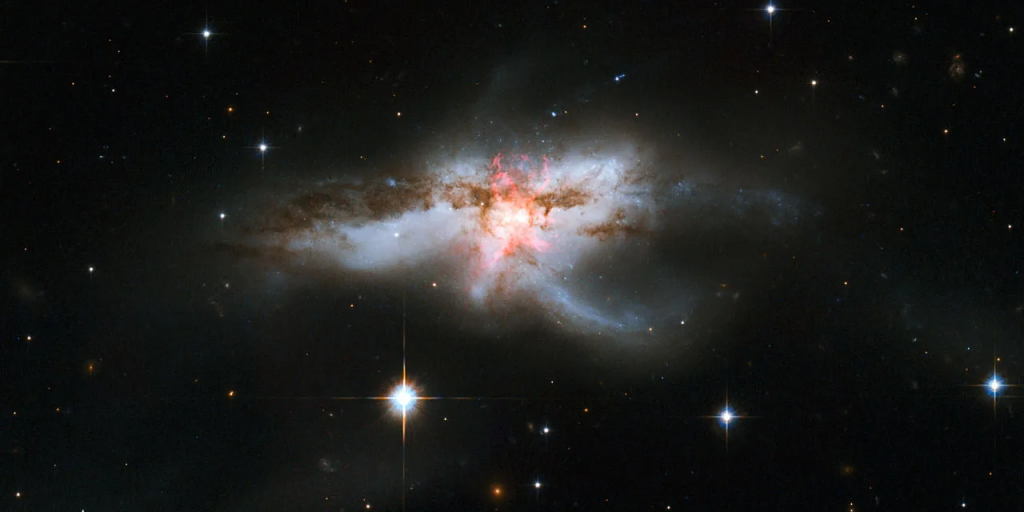Supermassive black hole binaries are the strongest sources of gravitational radiation in the universe. From them, we will learn more about galactic formation and structure.
When two black holes are locked in orbit they emit gravitational waves which causes them to lose energy, leading to an inspiral and collision of the system.

Credit: NASA, ESA, the Hubble Heritage (STScI/AURA)-ESA/Hubble Collaboration, and A. Evans (University of Virginia, Charlottesville/NRAO/Stony Brook University)
The emitted gravitational waves contain information about the two bodies and the surrounding spacetime. Ground-based gravitational-wave detectors have now observed many binaries whose components are stellar-mass black holes, weighing tens of solar masses.
LISA will detect binaries whose components are supermassive black holes, weighing up to several tens of millions of solar masses. Information from their gravitational waves will provide us with rich insight into galactic formation and structure, across the observable Universe.